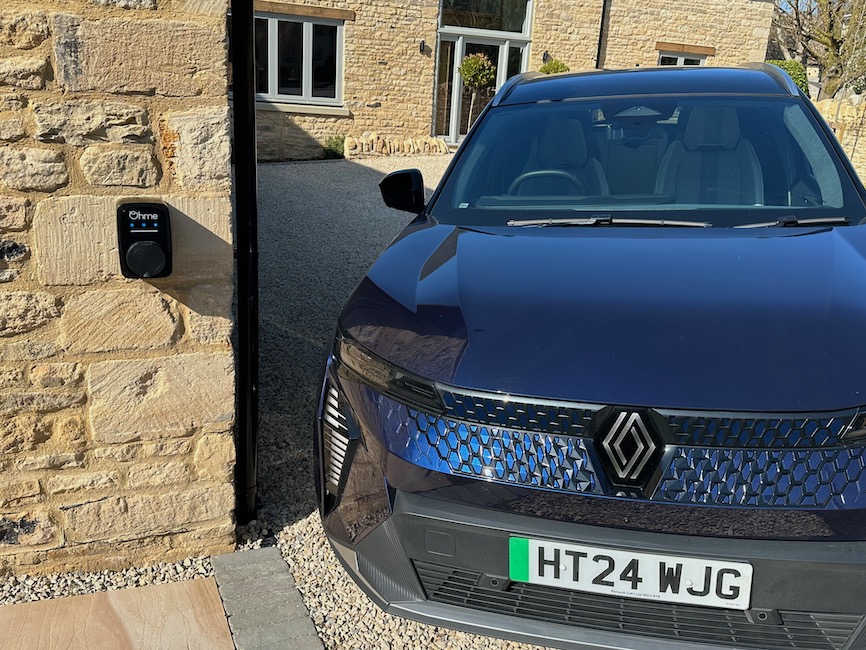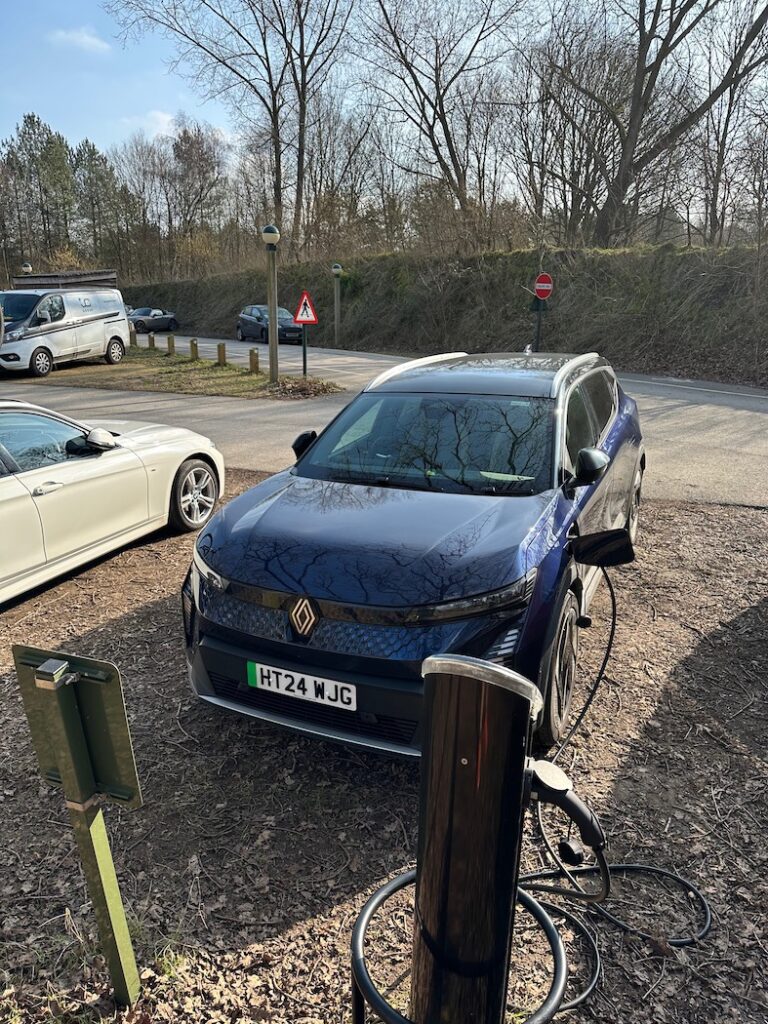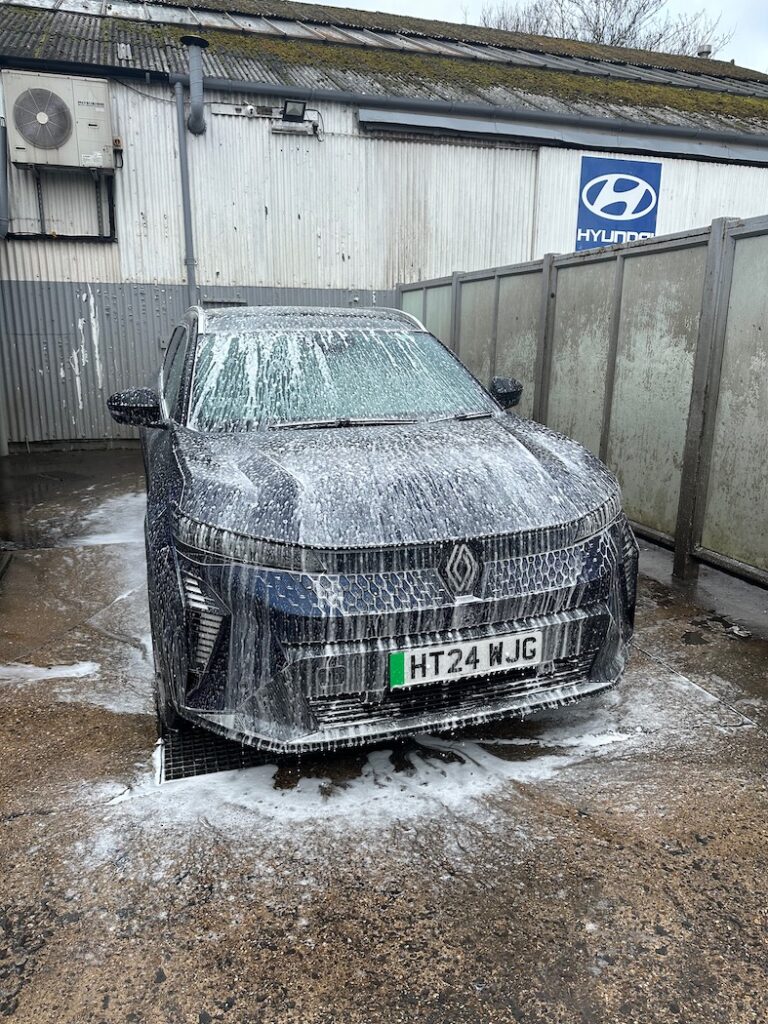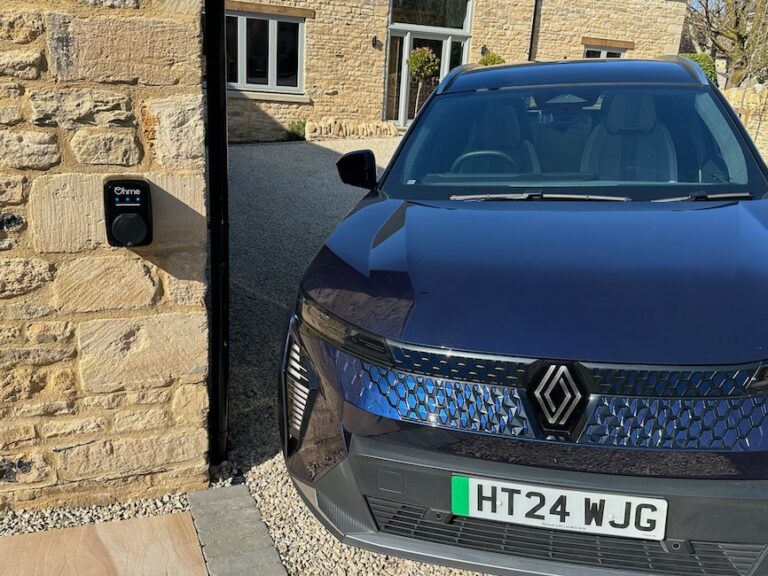Report 8

My time with the Renault Scenic E-Tech is finally at an end and it’s time to say farewell.
It’s hard not to feel a little sad as the Scenic has been a superb companion over the past six months. In fact, it’s hard to think of a better all-electric family car that can do what the Renault can do at the same price tag.
Also, while the new 5 and forthcoming 4 take all of the limelight, it feels like the Scenic, and the Megane E-Tech that I ran before it, perhaps don’t get the credit they deserve. Is it the king of family practicality that previous models to wear the Scenic badge aced so brilliantly? Perhaps not, but in reality, it’s more than that.
Having covered around 5000 miles, the 87kW battery has rarely seen me bothered by range anxiety even on longer journeys (see report 4 where we covered 486 miles in just over 24 hours) although we’ve done less lengthy journeys in the same way as I did the Megane. In fact, in many ways, the 87kWh battery in the Scenic is the perfect size. Big enough to give you a decent range, but small enough to not over-burden the car with a heavy battery.
And, while it may be lacking some of those little family tricks of Scenics past, I’ve regularly had four people in the car for trips and the decent-sized boot has been good enough for family holidays too. I especially liked the electrochromatic glass in the sunroof giving you a virtual siding sun shade going from clear to opaque at the touch of a toggle switch. Although now not uncommon, I also liked the comfort electric seat mode moving the seat back for easier entry and exit – even if there were occasions where it didn’t always work.
Talking of not working, the charging issues I experienced in the early days seem to have resolved themselves with an over-the-air update, but it was frustrating that the Apply Carplay was rather hit and miss, even if I connected via a USB cable. Admittedly Renault isn’t alone in this, but it made no sense why it would work one moment, but then not work the next, even over rapid short trips.
On the road, the Scenic was a bit of a mixed bag. The ride was certainly on the firmer side of comfortable for a family car and, while I did get used to it, it would only take a broken road to remind me just how harsh it really was. That said, for longer journeys and fast cruising, it certainly ate up the miles with a good and supportive driver’s seat.
The real down-side was rain. As stated before, the Michelin E-Primacy tyres simply don’t have enough grip in wet or slippery conditions. Obviously Renault’s engineers have signed the tyres off for their improved efficiency, but it’s easy to inadvertently set off the ABS when braking lightly or spin the tyres without even trying. If you’re offered an alternative choice of rubber, then take it.
There’s another couple of slightly more niche issues too. The squared-off shape of the door mirror arm is clearly very un-aerodynamic. The result is that when driving in the rain it peppers the side windows with tiny droplets, not just obscuring the view slightly to the mirror itself but also catching the light just in the corner of your vision, making it rather distracting. The last niggle is the rear view camera which is mounted low by the number plate, so quickly gets dirty and obscures your view rearward. Yes, these are first world problems, but they’re also really easy fixes for Renault for the update.
What doesn’t need to be fixed is the car’s efficiency. I did only average 3.1mls/kWh during our time, but many of those were faster motorway miles during the winter. Even during the spring temperatures, it had already started regularly returning 3.4mls/kWh or higher.
Overall then, the Scenic has been a great car and one that we’ve have no hesitation in recommending. We’re not questioning the appeal of the new 5 and 4 in the Renault showroom, it’s just that sometimes the everyday heroes are right there in plain sight.
Report 7

It’s service time for the Scenic.
Even though it’s due to leave soon, the service alert came up on the screen to book it in. I talked to Renault about leaving it until its return, but also wanted the opportunity to try out the local dealer network.
Geographically, the nearest full Renault dealer is over in Reading, which I was keen to attend to see if they had the new Renault 5 in the showroom. However, there’s a smaller service agent in High Wycombe and, while it may not offer the glitz and glamour of a showroom, I was happy for the time saved and they were happy for me to wait while they did the work.
That was just as well as the site was about as far from premium as you might imagine. It wasn’t the garage’s fault to be fair. It’s a small site with tight parking, but there is also building work going on with the adjacent filling station, so it wasn’t pretty – or quiet. I’d been told it would take between two to three hours, but there was wifi and a waiting area, so I was happy to sit and get on with my work.
On arrival however, someone immediately came out to greet me, had clearly recognised the number plate and they booked the car in. As they’d already explained on the phone, they couldn’t do the recall that was due on the car due to staff absence, but everything else would be done.
The waiting area was just a few chairs and a couple of tables along with the obligatory coffee machine and an empty fridge, so lacking the glamour of a full-on dealership, but it was a sacrifice I was willing to make.
The smaller size of the service agent did have other downsides though, which set some of my alarm bells ringing. My seating position meant that I could see my car for the whole time I was there and for 45 minutes it didn’t move from the position where I’d parked it – concerning me that I was going to be there a lot longer than planned.
However, I got on with my work, even took a Teams call while there and just over one hour later the car was back and ready to go. Now there’s two ways to view this. Either you can be annoyed that the work was done in next to no time (though there’s a lot less to check on an EV obviously), so what are you paying for?
Or, you can think (as I did), it’s taken up less of my day and within two hours of pulling up I’m already on my way back home. No, the car wasn’t valeted as it might have been by another flashier dealer, but I can do that myself. My time and convenience was more important than someone dragging a sponge over the car.
Instead, the staff were highly efficient, polite and I drove away very happy indeed. Sometimes, good service and a satisfactory outcome comes in unusual forms.
Report 6

Half term meant my son and I’s traditional trip to Centreparcs, needing a decent length journey up to Elveden in order to set light to my bank account.
For anyone familiar with the holiday resort, it’s not the cheapest of places to go, especially during half term, but it does help to serve a purpose particularly if you want to stay in the UK. Also, while I don’t regular confuse my phone number with my bank balance, the small piece of good news outweighing the financial burden is that Centreparcs has started nailing its charging facilities.
It’s also a perfect example of the right speed for the right location. As you don’t need to move your car for four days, there’s simply no need for ultra rapid chargers – 7kW chargers, the same as you’d have at home, perfectly suffice. Even better, for some of the locations with parking alongside the accommodation (usually it’s in a main car park), it means you can easily move it once you’re charged.
With the Scenic’s rough 280 mile range reduced to around 250 miles in the current temperatures and slightly less with motorway driving, the reality is that I could have got home on a full charge, but as the facilities were there, I figured I’d rather top up for the extra peace of mind.
At 49p/kWh at the location, this got me thinking about the cost of charging too, especially as the 1st April will see a price rise for the standard tariff for household charging. While it’s unrealistic, for ease of comparison, if you were to do a full charge with the Renault Scenic from 0 to 100% at this 7kW Podpoint charger, that would set you back £42.63.
The same 87kW charge at an ultra-rapid CCS charger could set you back a whopping £73.95, underlining why ultra rapids are best used parsimoniously.
On the new SVT home tariff of 27p from 1st April 2025, that would drop to £23.49 – so a substantial saving and one that any self-respecting fleet manager should bear in mind when providing their drivers with EVs.
The real saving however, comes if I charge the Scenic on a dynamic smart home tariff such as Intelligent Octopus Go: the reason is that then I could get a full charge from the Scenic for just £6.09. And no, that’s not a typo. The same amount of electricity, 87kW, but those tariffs are just 7p/kWh, less than a tenth of a public CCS charger and, best of all, it charges while you sleep, so no lost employee hours.
For fleet managers going forward, they would do well to encourage any of their EV drivers to explore these money-saving routes for their home electricity tariffs, so that they in turn can enjoy the savings as well. Now I’ve just got to work out a way of getting a week at Centreparcs for a tenth of the usual price…
Report 5

It will hardly have escaped your notice that, of late, the weather has been somewhat atrocious. As outlined in my previous report on my brief mini roadtrip in the Renault Scenic E-Tech, it’s sometimes felt that most of my driving has been spent with my lights and wipers permanently on, battling the elements.
This has had two effects. The first is that the Scenic has become utterly filthy, with rarely a convenient dry day to be able to get it to the local manual car wash. I’ve mentioned the downsides of the bluff, squared-off rear of the Renault before with the quickly grime-covered rear facing camera, but the aerodynamic result is that the tailgate and rear-windscreen also get filthy quite quickly.
That’s no excuse for the rest of the car of course, which over the turn of the year rapidly got every more filthy. In fact, by the time I got to the local manual car wash – a very handy, top-up style system where you can take your time – wetting and snow-foaming the car first meant that I couldn’t see exactly where I was cleaning with the brush. The result was that it was only once I got the car back home and it had dried, that I realised just what an appalling job I’d done and how many spots I’d missed. Note to self – don’t leave it so long next time or get it cleaned professionally.
The second thing that has become apparent, is the grip from the Renault’s tyres – or, more specifically, the lack of it in low grip conditions such as wet or greasy roads. I’m not sure about you, but I don’t tend to think about my tyres all that often, except for when they start to under-perform from your normal expectations.
The Scenic is wearing 235/45 R20 Michelin E-Primacy tyres and while the low profile would account for the firm ride, it’s clear where its priorities lie. Reading up on its statistics (I know, I know, I need to get out more), it’s rated for low wear and also for low rolling resistance meaning improved efficiency – with up to a 27% saving in energy consumption compared to rivals apparently.
Which is great, up until you get to the tyre’s B rating for its wet weather performance. In low grip circumstances such as wet or muddy roads, the grip just simply isn’t good enough. It’s either spinning its wheels too easily or actually setting off the ABS far earlier than you’d expect when braking. Independent online reviews suggest we’re not alone in our findings either. Given a choice, we’d definitely investigate a change of rubber – yes we want the car to be as efficient as possible, but we’d also rather not be parked in the car in front’s boot either…

